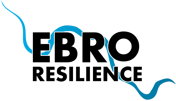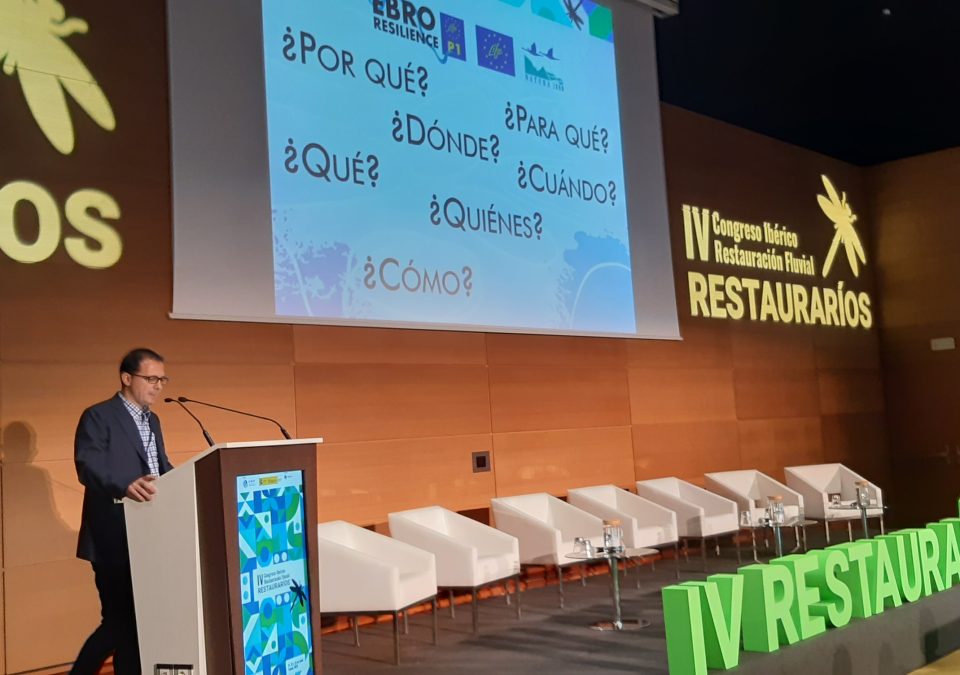The city of Toledo and the IV Iberian Congress of River Restoration have received the proposals of the LIFE Ebro Resilience P1 Project and, in general, of the philosophy of the Ebro Resilience Strategy to mitigate the risk of flooding in the middle stretch of the Ebro.
Both in the plenary session of this Congress, held between June 21 and 23 in Toledo, and in its parallel sessions and through posters with case studies, the technical team presented various aspects of the interventions, presenting the Ebro basin as a model of intervention and the LIFE Ebro Resilience p1, which is supported by the financial instrument of the European Union, as an action that can be replicated in other Spanish and European basins.
Restores Rios, organized by the Centro Ibérico de Restauración Fluvial (CIREF) in coordination with the Confederación Hidrográfica del Tajo, Wetlands International – European Association and the Dirección General del Agua del Ministerio para la Transición Ecológica y el Reto Demográfico de España, is the most important event on river interventions and a meeting forum for reflection and exchange of experiences.
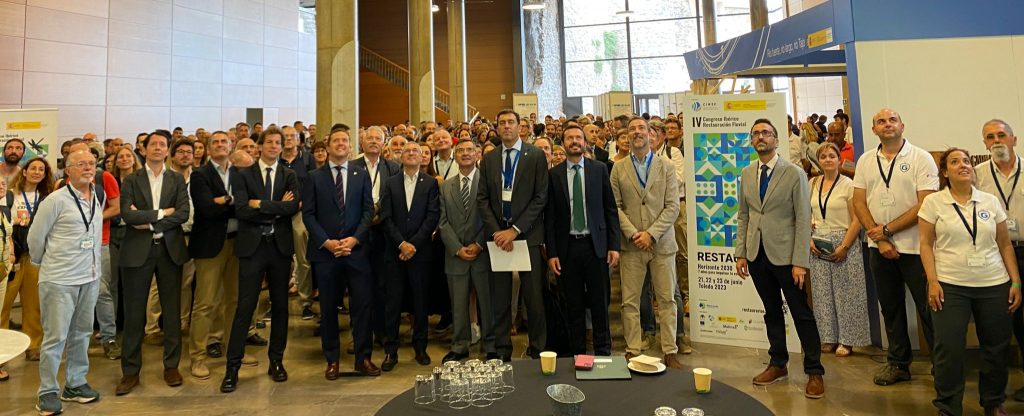
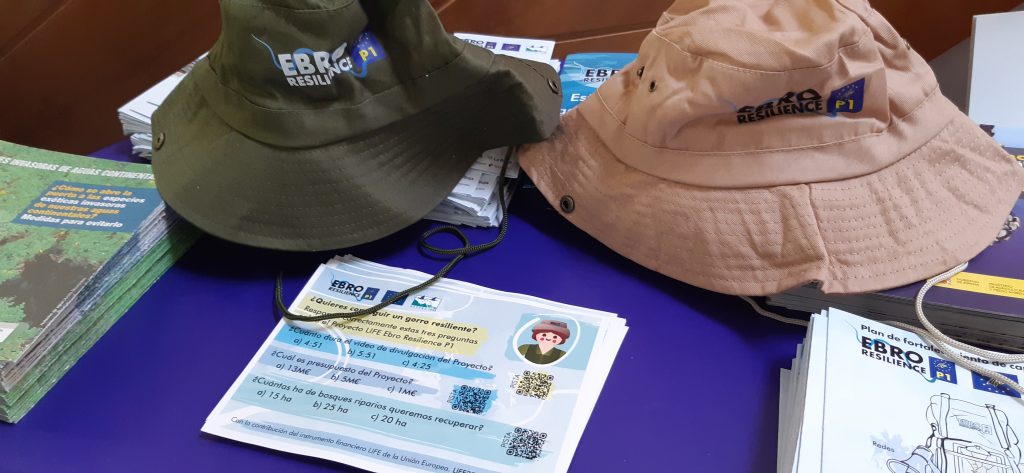
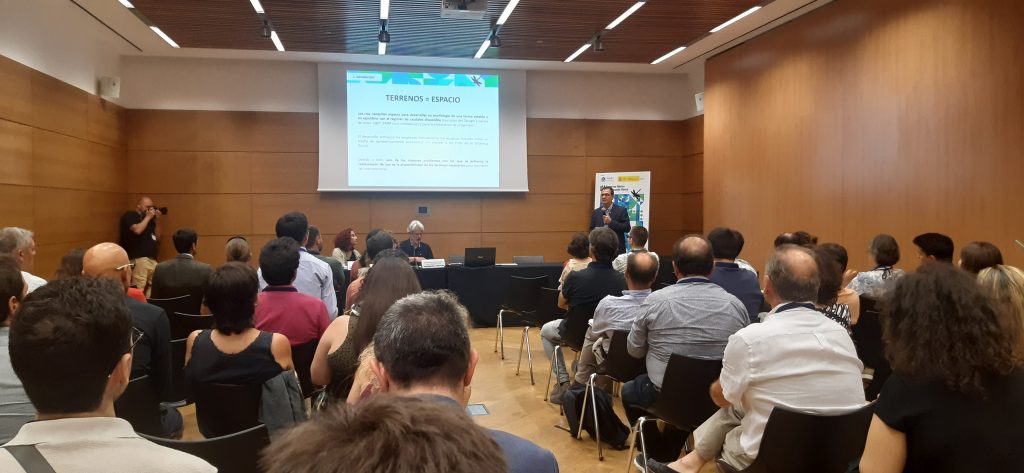
Plenary
The “LIFE Ebro Resilience Project: river restoration and flood risk management” has been one of the topics of the main session, the plenary of the Congress, through the presentation of David Gargantilla, head of Service at the Ebro Hydrographic Confederation and technical coordinator of the LIFE project. The proposal has shared space with another LIFE Project, the IP Douro and with the international presentations dedicated to wetlands as a solution for droughts and floods and to the restoration carried out in Portugal after the 2017 fires.
Innovative actions, the commitment to the recovery of river space, nature-based solutions, the involvement of the local population and administrative coordination are the highlights of the project that have been discussed at the Congress. The participation of the Ministry for Ecological Transition and the Demographic Challenge (MITECO), through its companies TRAGSA and TRAGSATEC; the Ebro Hydrographic Confederation; the Government of La Rioja; the Government of Navarra, through Gestión Ambiental de Navarra, S.A. (GAN-NIK); the Government of Aragón and the Aragonese Water Institute as partners in the LIFE Project has been recalled.
In addition, the status of the interventions has been reviewed, with the advanced execution of the morphological adaptation of the site of La Roza, in Alfaro, one of the actions of its Zone 1 or “Combined Section of Actions: Alfaro (La Rioja – Castejón (Navarra)”. This consisted of the recovery of 22 hectares of space for the Ebro River, with the aim of reducing the effects of flooding and also improving its ecological state.
La Roza will join the work in the meander of El Señorío, in Castejón, Navarra, which, with the same objective of recovering the flood plain, has already passed its public information process.
Finally, the so-called Zone 2, or pilot action of the project, focuses on the Osera de Ebro – Fuentes de Ebro (Zaragoza) section, which includes restoration and the construction of lateral buffer areas, a pre-flood area to reduce damage to agricultural land. The first phase of this project is expected to go out for Public Information this June.
The LIFE Ebro Resilience P1 Project (LIFE20 ENV/ES/00327), approved by the European Commission in the LIFE 2020 call, covers three autonomous communities (La Rioja, Navarra and Aragón), has a duration of 6 years and a total budget of 13,310,350 €, with 55% European funding.
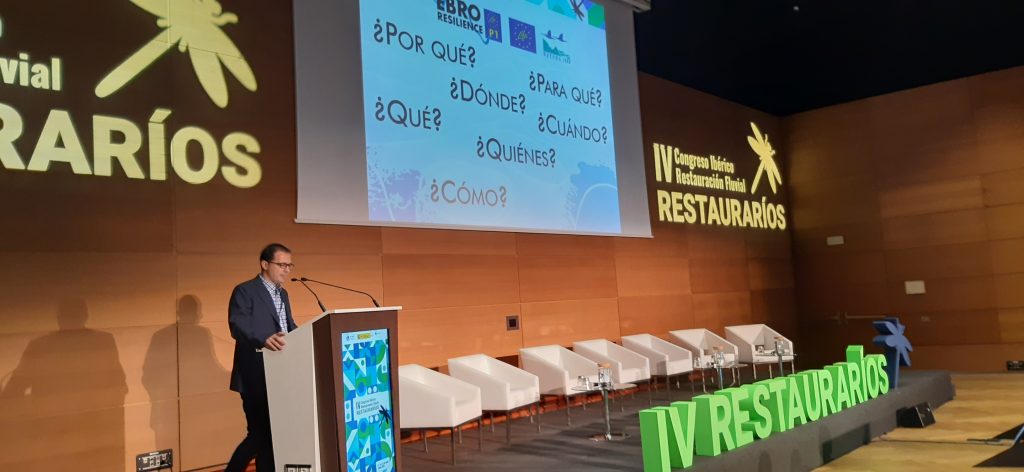
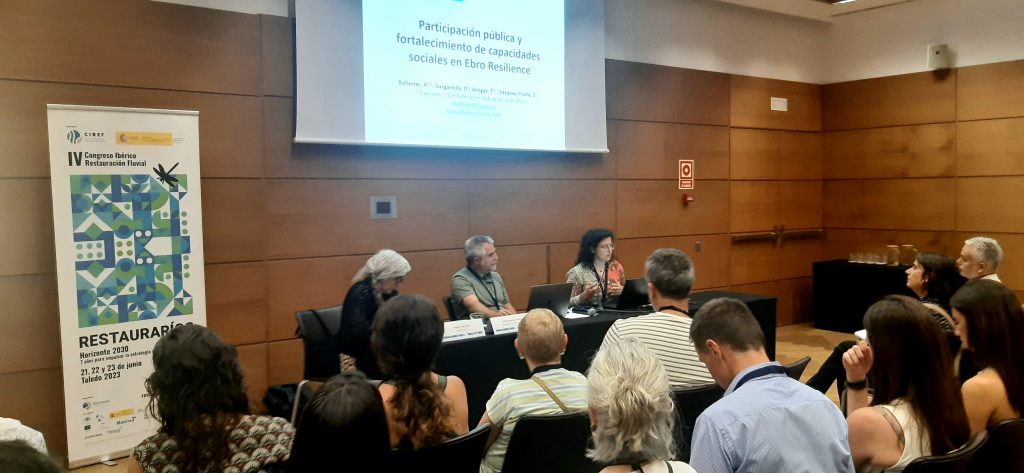
Participation and other aspects
In the parallel sessions, another of the highlights of the LIFE project has been the program of actions for social participation, with some truly innovative proposals, such as the conflict transformation group on flooding issues and also the proposals to provide the local population with tools to improve their preparedness for these phenomena, the so-called Capacity Building Plan.
Alba Ballester, Tragsatec technician for LIFE participation actions, talked about the experiences carried out and the new ideas that are emerging from the territory itself to make this project an example of involvement of the riverside population.
In addition, the technicians attending the Congress were able to analyze another crucial aspect of the project: the availability of land for river restoration.
Ebro Resilience and more
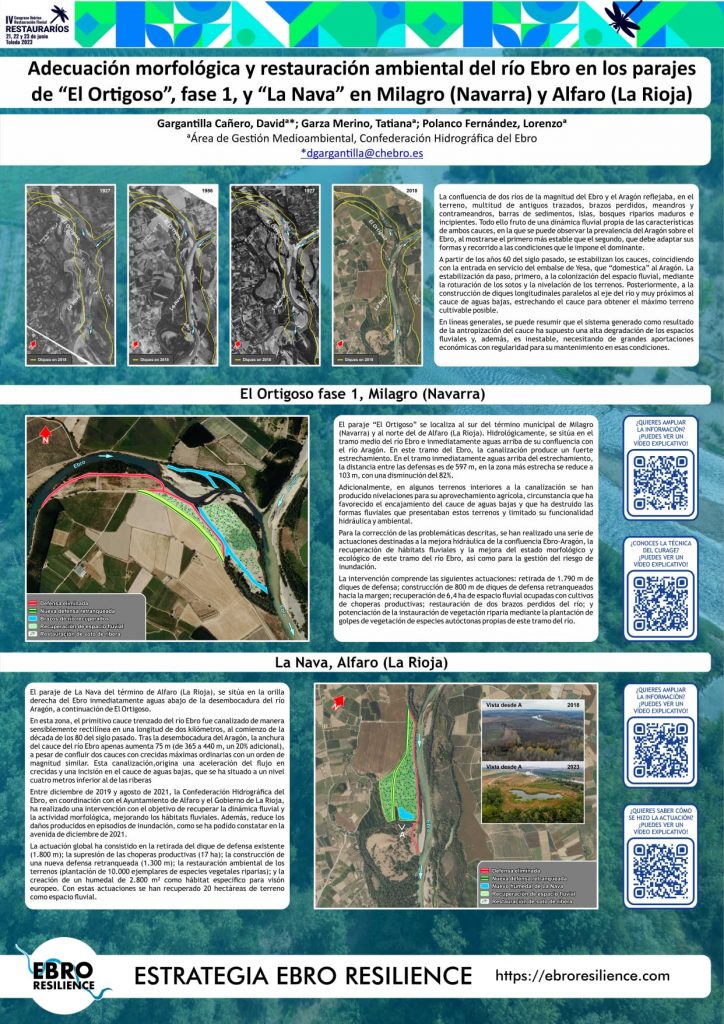
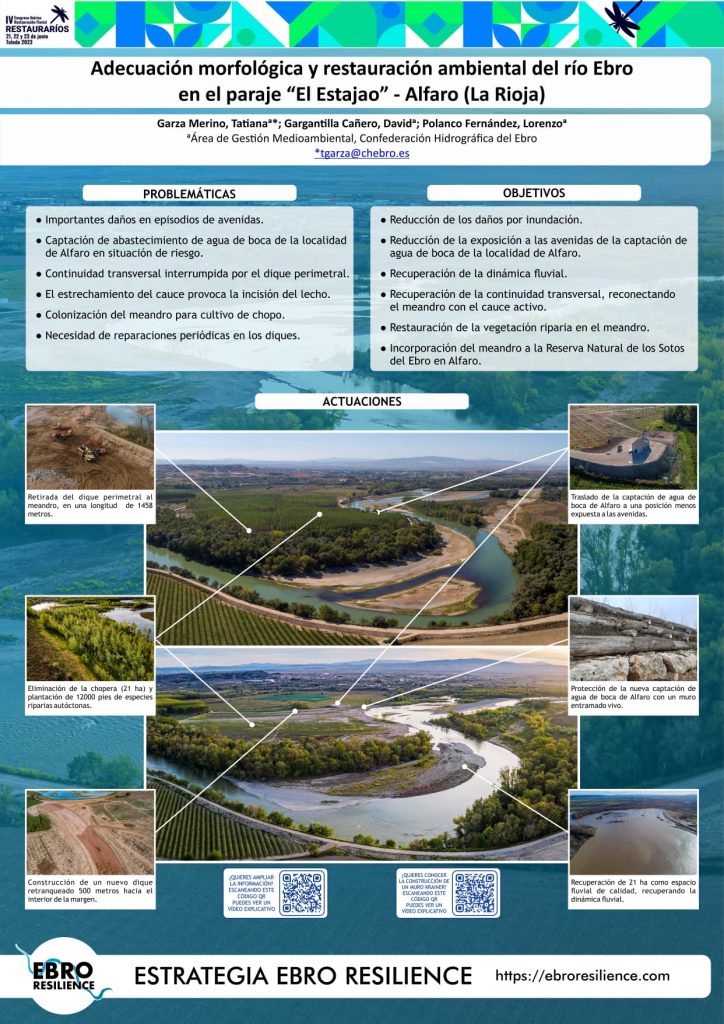
The LIFE Project is part of the Ebro Resilience Strategy, which includes all the measures of the Flood Risk Management Plan for the middle stretch of the Ebro, specifically between Logroño and La Zaida (Zaragoza).
In Restarura Rios, some of the Resilience interventions implemented or being implemented by the Ebro Hydrographic Confederation have been presented as case studies in technical posters. Specifically: “Morphological adaptation and environmental restoration of the Ebro in the area of El Ortigoso, in Milagro, Navarra and the area of La Nava, Alfaro, La Rioja” and the “Environmental restoration of the area of El Estajao, in Alfaro, La Rioja”.
Finally, in Toledo, other interventions in execution or in project in the Ebro basin integrated in the River Restoration Strategy of the Ministry for Ecological Transition and the Demographic Challenge have been announced: Phase 3 of the “Hydrological connection and habitat improvement in the meanders of the Arga, in Funes, Navarra”, currently underway and the projects of the future river restorations of the river Noguera de Tor, in Barruera, La Vall de Boí, Lleida and the river Queiles in its middle section, between Navarra and Aragón.
